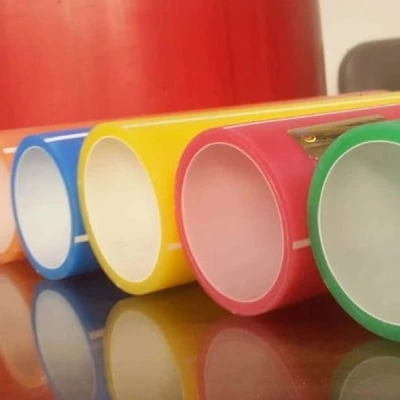Optical Fibre Cabling
In today's digital landscape, the surge in mobile phone usage and internet connectivity has dramatically increased the need for transmitting information over longer distances with greater bandwidth. Speed and reliability are now more crucial than ever, especially as urban areas emphasise underground cabling to enhance aesthetic appeal. Optical fibre cabling stands at the forefront of this technological advancement, providing a secure and efficient medium for sensitive data transmission, resistant to tapping and interference.
At Utkarsh India Limited, we understand these critical demands and position ourselves as trusted providers of superior optical fibre cabling solutions. We specialise in manufacturing HDPE PLB Ducts made from virgin, UV-grade HDPE materials, ideal for deploying optic fibre cables. As the leading PLB duct pipe manufacturer, our products adhere to TEC Standards and international benchmarks, ensuring exceptional resistance to natural elements and mechanical damages.
Beyond optical fibre cabling, we offer a comprehensive range of infrastructure solutions, including Street Light Poles, High Masts, Traffic Signal Poles, Steel Tubular Poles, CCTV Poles, and other traffic structures. With over 40 years of manufacturing excellence and a dedicated team of engineers nationwide, Utkarsh India Limited has established a solid reputation in the infrastructure industry. We are committed to building a more connected and efficient world where technology and urban beauty coexist seamlessly.
Different Types of Optical Fibre Cabling and Their Benefits
Single-Mode Fibre Optic Cable: Ideal for long-distance communication, this cable has a small core diameter that allows only one light mode to propagate. This reduces signal attenuation and increases bandwidth, making it perfect for telecommunication networks spanning vast areas.
Multi-Mode Fibre Optic Cable: Suited for shorter distances, multi-mode cables have a larger core diameter, permitting multiple light modes. They are cost-effective and commonly used in local area networks (LANs) and data centres where high bandwidth over short distances is required.
Armoured Fibre Optic Cable: Designed for harsh environments, these cables feature protective layers that guard against physical damage. They are ideal for underground installations or industrial settings where the cable might be exposed to rodents or mechanical stress.
Loose Tube Fibre Optic Cable: Commonly used in outdoor applications, the fibres are housed within a tube filled with water-resistant gel. This design protects against moisture and environmental factors, making it suitable for aerial or duct installations.
Tight Buffered Fibre Optic Cable: Used mainly indoors, each fibre is coated directly, allowing for easy handling and termination. This type is perfect for campus networks and intra-building communication where flexibility and ease of installation are important.
-
With 40 years of manufacturing excellence and a team of 100 engineers working across the country, Utkarsh India Limited is a trusted name in the Infrastructure industry.
Related Products
FAQs
The cost to lay fibre optic cable varies depending on distance, terrain, and installation methods. The fibre optic cable price itself typically ranges from ₹15 to ₹50 per metre. Including labour, trenching, and other expenses, the total installation cost can range from ₹500 to ₹2,000 per metre. Bulk installations or favourable conditions can help reduce these costs.
Yes, Utkarsh India, as a leading PLB duct pipe manufacturer, offers options for integrating security features or monitoring systems into its optical fiber cabling solutions, ensuring secure and reliable data transmission.
Yes, optical fiber cabling can be installed underground by using specialised HDPE PLB Ducts manufactured by Utkarsh India. These HDPE ducts are designed to protect optic fiber cables and ensure minimal signal loss.
Data transmitted through optical fiber cabling is secured by using encrypted communication protocols and physical security measures such as secure ducts and monitoring systems, ensuring data integrity and confidentiality.
Yes, Utkarsh India customises optical fiber cabling solutions to meet specific project requirements, positioning itself as a trusted PLB HDPE ducts manufacturer offering products made to TEC Standards and International Standards for superior protection and reliability.
Maintenance for optical fiber cabling installations primarily involves periodic inspections for damage or degradation, ensuring proper functioning and longevity of the system.
Optical fiber cabling offers superior reliability due to its immunity to electromagnetic interference, minimal signal loss over long distances, and resilience to environmental factors.
Have enquiries? Drop them here..
Explore our insightful articles and expert perspectives on key topics related to our range of products.



